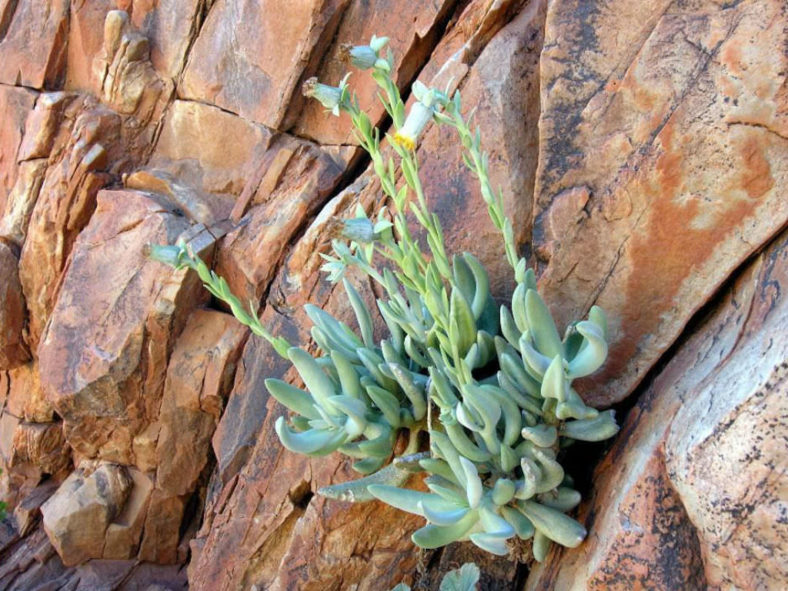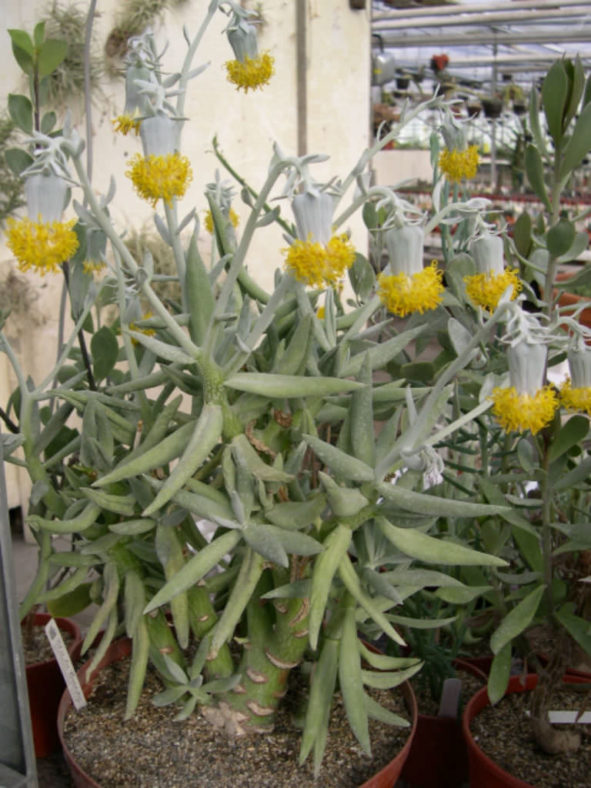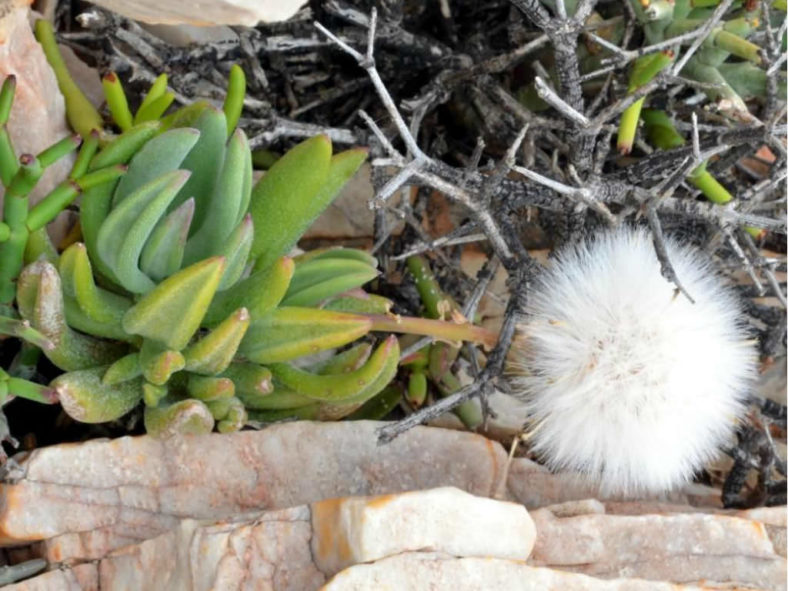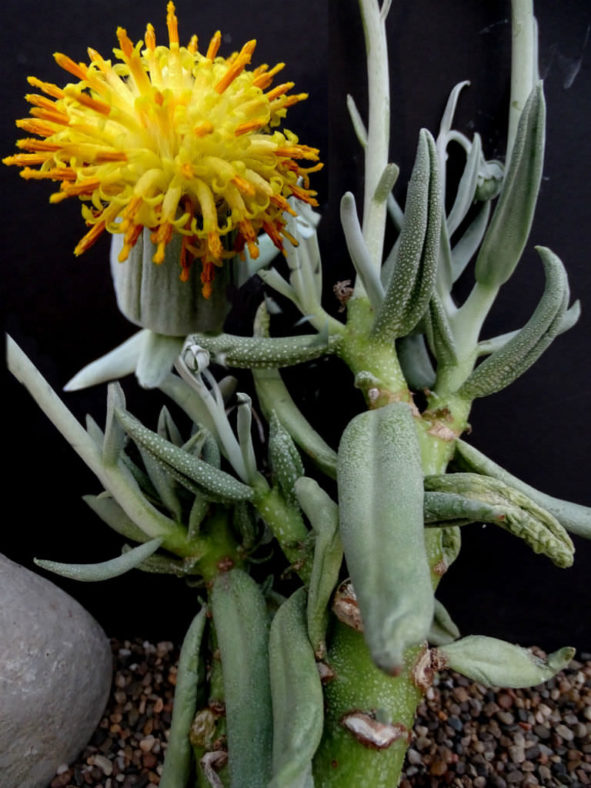Scientific Name
Kleinia cephalophora Compton
Common Name(s)
Blazing Glory, Cliff Kleinia, Mountain Fire
Synonym(s)
Senecio cephalophorus
Scientific Classification
Family: Asteraceae
Subfamily: Asteroideae
Tribe: Senecioneae
Subtribe: Senecioninae
Genus: Kleinia
Description
Kleinia cephalophora, formerly known as Senecio cephalophorus, is a striking succulent shrub with blue-green leaves and beautiful large nodding flower heads. It can grow up to 16 inches (40 cm) tall. The leaves are fleshy, blue-green, lance-shaped with strongly recurved margins and measure up to 4 inches (10 cm) long and 0.6 inches (1.5 cm) wide.
In winter, this plant produces solitary flower heads with bright yellow florets that sometimes become orange. The flower heads can reach up to 1.2 inches (3 cm) in diameter.

Hardiness
USDA hardiness zones 10a to 11b: from 30 °F (−1.1 °C) to 50 °F (+10 °C).
How to Grow and Care
Established Senecios are extremely drought tolerant. They need some water during the summer but do not leave the soil wet for prolonged periods. Allow the soil to dry out between waterings in the winter when they are somewhat dormant. Since they are growing in sandy soil, nutrients must be replenished. Fertilize annually, but lightly. Too much fertilizer will cause a lot of leggy growth.
Taller varieties can become floppy. In early spring, you can prune them back to a firm stem and even root the cuttings.
Plants can be divided or repotted in early spring. If you are growing them in containers, they enjoy spending the summer outdoors. Wait until there is no danger of frost and move them back indoors in the fall.
Senecio can be grown from either seed or cuttings. Seeds prefer warm temperatures, around 55 °F (13 °C), and constant moisture to germinate. Cuttings are easier and faster. Cut during the growing season, early spring to fall. Root in sandy soil, in containers.
See more at How to Grow and Care for Senecio.
Origin
Kleinia cephalophora is native to southern Namibia and South Africa (Northern Cape).
Links
- Back to genus Kleinia
- Succupedia: Browse succulents by Scientific Name, Common Name, Genus, Family, USDA Hardiness Zone, Origin, or cacti by Genus
Photo Gallery
Click on a photo to see a larger version.



